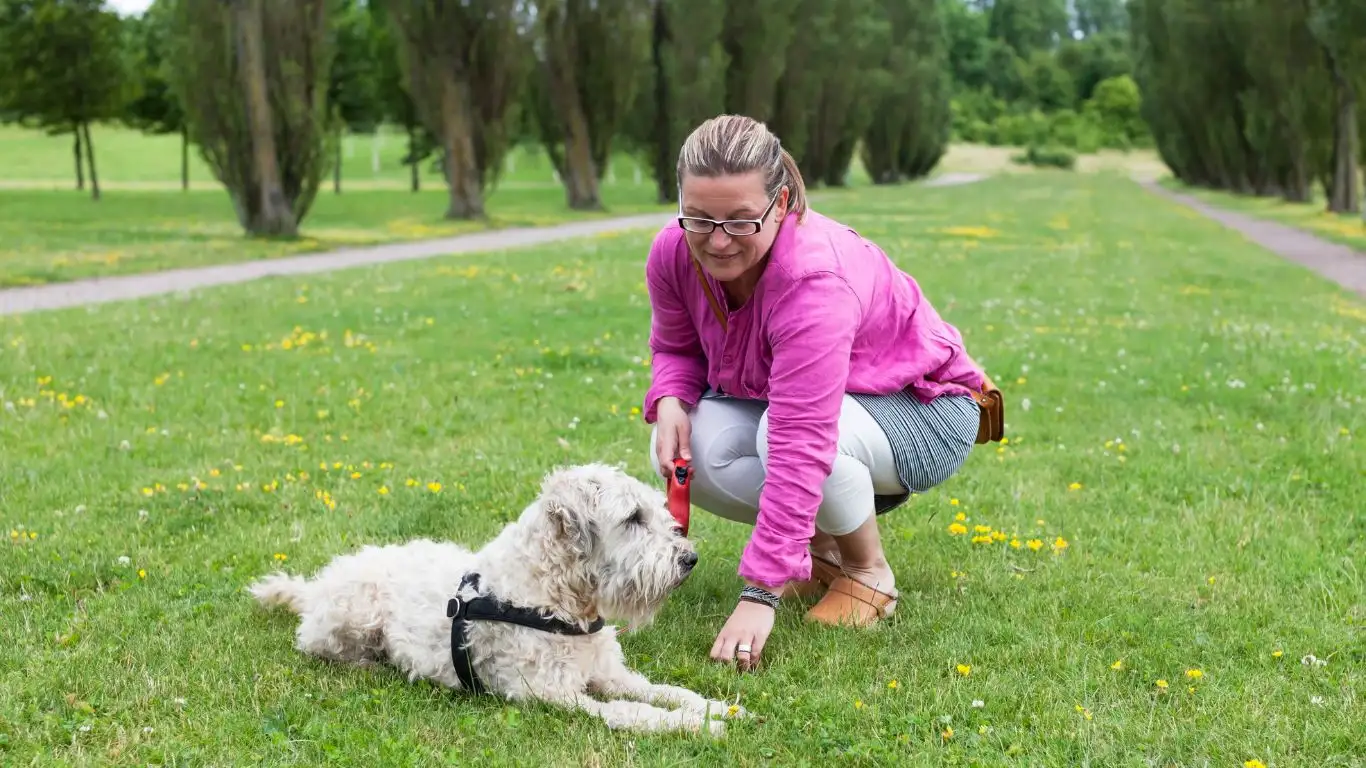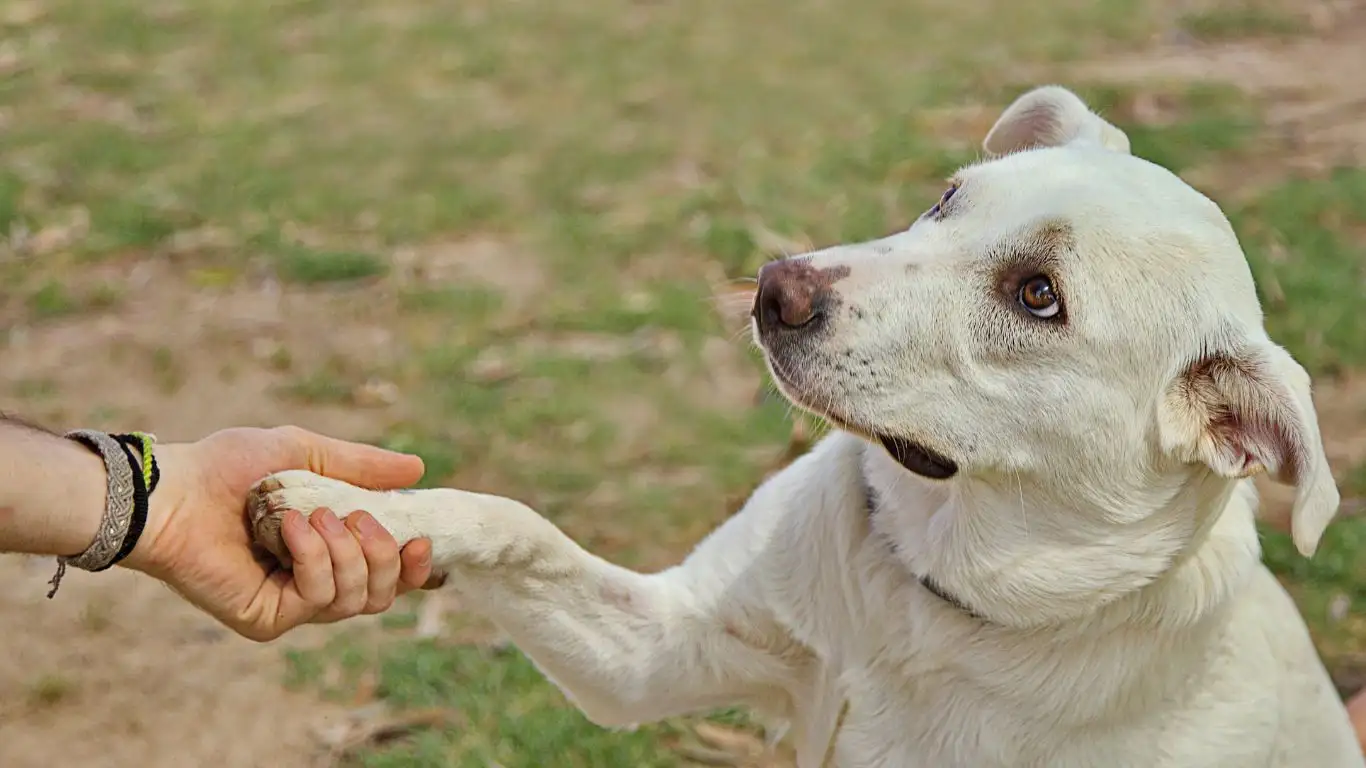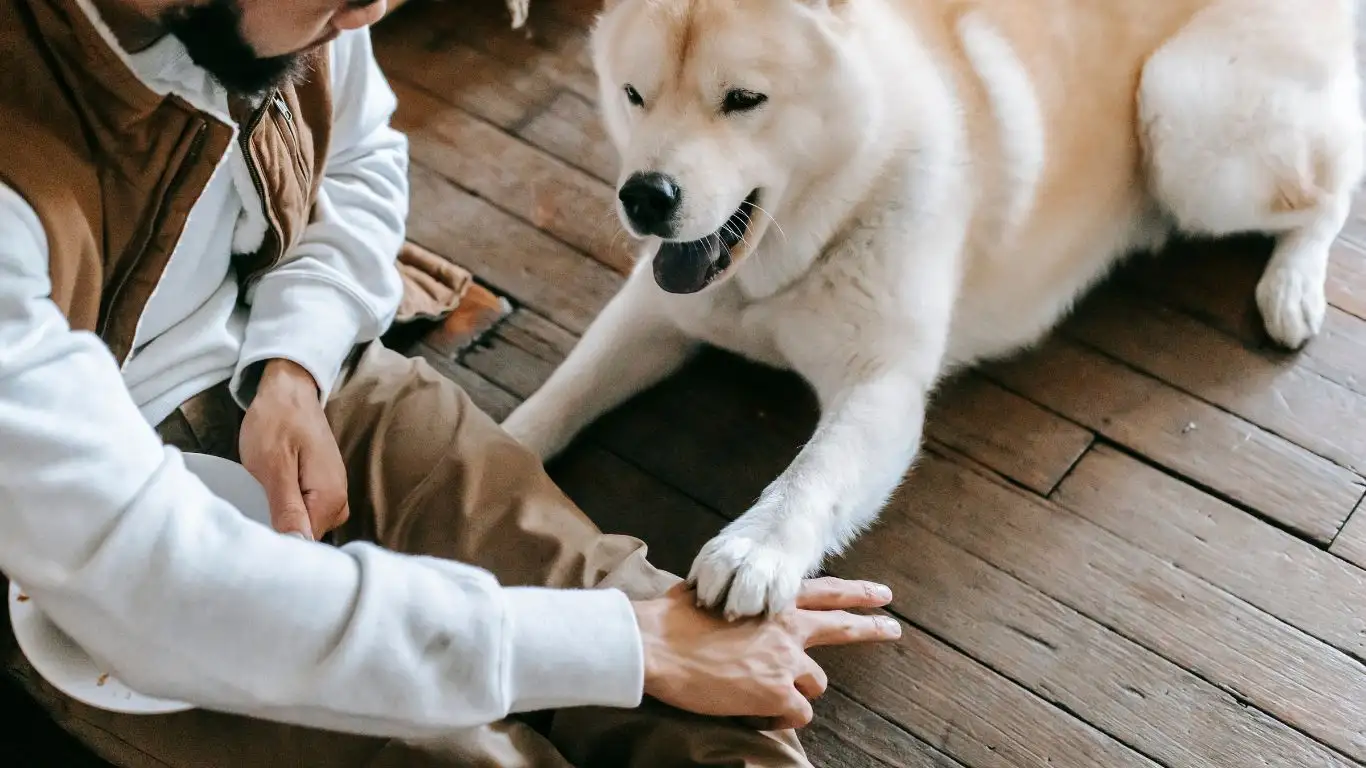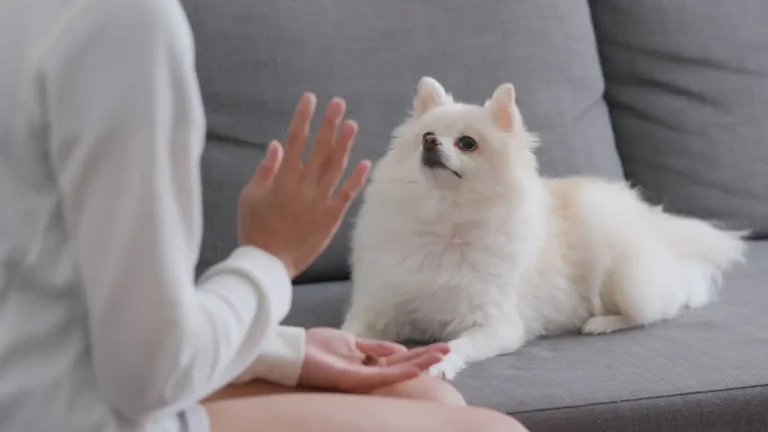Stop Night Barking Fast: How to Train Your Dog to Sleep Peacefully
Wondering how to train a dog to stop barking at night? You’re definitely not alone. As someone who’s worked closely with therapy dogs for years, I’ve seen even the calmest canines suddenly turn into night-time bark machines. Whether it’s a leaf rustling, a neighbor walking past, or some mystery sound only dogs can hear, barking at night can quickly become a disruptive (and exhausting) habit. But the good news? You can absolutely train them out of it—with patience, the right strategies, and a little insight into why it’s happening in the first place.
Why Dogs Bark at Night (And Why It’s Not Always Bad)

Before we dive into training techniques, let’s talk about what’s going on in your pup’s head. From my experience, dogs don’t bark at night just to annoy you—though it might feel like it when you’re wide awake at 2AM. Most dogs are simply reacting to stimuli or trying to communicate something. Here are some common triggers:
- Environmental noise: Think garbage trucks, raccoons, or late-night joggers.
- Lack of exercise or stimulation: A bored dog during the day = a restless dog at night.
- Separation anxiety: Some dogs panic when left alone in a different room or crate.
- Territorial behavior: If they think someone’s near “their” space, they’ll sound the alarm.
Understanding the root cause helps you tailor your training to your dog’s specific needs—because there’s no one-size-fits-all fix. And trust me, the dogs I train for therapy work? They all come with unique quirks and challenges too. No shame in that!
Setting the Stage for Better Sleep

Routine Is Your Best Friend
Dogs, just like us, thrive on predictability. One of the simplest ways to cut down night barking is to create a bedtime routine. It doesn’t have to be fancy, just consistent. Here’s what I often recommend to new dog parents in my training sessions:
- Evening walk or gentle playtime (to burn off that last bit of energy).
- Calm winding-down activities—think brushing, cuddles, or a treat-filled puzzle toy.
- A designated sleeping spot that’s cozy, safe, and away from distractions.
One of my therapy dogs, Buddy, used to get really antsy at night until we implemented a bedtime “ritual.” A short sniff walk, a lick mat with peanut butter, and some light background noise (like a white noise machine) made a world of difference.
Managing the Environment
If your dog’s barking at shadows or sounds, make it harder for them to notice those things in the first place. Sounds simple, but a few tweaks can go a long way:
- Block outside noise with a fan, calming music, or even white noise.
- Use curtains or blinds to stop your dog from seeing movement outside.
- Try a crate cover if your dog sleeps in a crate—it creates a den-like, secure vibe.
Don’t underestimate how powerful environmental tweaks can be. I once worked with a German Shepherd who barked at every passing car light. A heavy blackout curtain? Problem solved overnight.
When Barking Means Something Deeper

Could It Be Anxiety?
Some dogs bark not because of outside triggers, but because they’re anxious about being alone or separated from their humans. If your dog whines, scratches, or seems distressed along with the barking, you might be dealing with separation anxiety.
I’ve had more than a few therapy dogs-in-training need extra work in this area. It’s super common. But don’t worry—there are gentle ways to build up their confidence. It might mean gradually increasing the time they spend alone, or using calming aids like pheromone diffusers or anxiety wraps. We’ll dive deeper into those tools in the next section.
Training Techniques That Actually Work

So now that we’ve got the basics down—routine, environment, understanding triggers—let’s get into the hands-on stuff. This is where the real work (and fun) begins. When people ask me how to train a dog to stop barking at night, I always remind them: training isn’t a one-day fix. It’s about consistency, positive reinforcement, and staying calm when your dog loses their cool at 3 a.m.
The Power of “Quiet” Training
One of my go-to techniques with therapy dogs who bark too much is teaching the “quiet” command. But here’s the twist: we don’t start by punishing barking—we start by acknowledging it and redirecting. Here’s how I usually coach pet parents through it:
- Wait for your dog to bark (yes, let them!)
- Say a cue like “Speak” to pair with the bark, then reward.
- Now say “Quiet” calmly while showing a treat. The second they pause—even briefly—reward!
- Repeat short sessions daily. Don’t expect a miracle, but after a few days, they start catching on.
It’s a little counterintuitive at first, but trust me, when a golden retriever I worked with went from 10-minute bark marathons to stopping at the word “quiet”? Game changer for her and her human.
Nighttime Desensitization
If the barking is caused by outside noise or visual stimulation, a desensitization routine can help lower your dog’s response to those triggers. This is especially helpful for reactive dogs or breeds with high guarding instincts (hello, Chihuahuas and Shepherds!).
Start by exposing them to mild versions of the noise or sight that sets them off—but during the day, when they’re more alert and less anxious. For example, I once used a recording of city sounds during training sessions, gradually increasing the volume while reinforcing calm behavior with treats and praise. Within a couple of weeks, that same dog barely blinked when the actual city noises happened at night.
What to Avoid When Training

This might be the trainer in me talking, but we need to touch on what not to do. I’ve seen plenty of well-meaning dog parents accidentally make things worse with these common mistakes:
- Yelling back at your dog: To them, that sounds like you’re barking too—and joining in!
- Letting them out every time they bark: That can teach them barking = reward or attention.
- Using punishment-based tools: Shock collars or sprays might suppress the behavior temporarily, but they rarely address the underlying cause—and often create fear.
It’s tempting, I get it. Especially when you’re sleep-deprived. But keeping your cool and sticking to positive methods always leads to better results (and a stronger bond with your dog).
Tools That Can Help (If Used Right)

Sound Soothers & Comfort Aids
While training is the long-term fix, some tools can give you and your pup a little nighttime peace while you work on it. These are a few favorites I often recommend based on different dog personalities:
- White noise machines: Great for muting those sneaky outside sounds that set dogs off.
- Calming music playlists: Yup, there are actual Spotify playlists made for dogs (and they work!).
- Pheromone diffusers: They mimic calming scents that mother dogs produce and can help anxious pups settle.
- Crate covers or dog tents: Especially helpful for dogs that sleep in crates and need a den-like feel.
One of the rescue dogs I worked with came from a chaotic shelter environment. The first few nights in her foster home, she barked non-stop. A pheromone plug-in and some gentle harp music made a night-and-day difference—literally.
When to Consider a Professional
If your dog’s barking is constant, intense, or tied to major anxiety issues, you might want to loop in a certified trainer or behaviorist. I always tell folks: asking for help isn’t failure—it’s smart. Especially when your sleep (and sanity) are on the line.
A professional can pinpoint subtle cues you might miss, and create a custom plan that fits your lifestyle. In some cases, I’ve even worked alongside vets when the barking stemmed from pain, aging, or other medical issues. So if something feels off, trust your gut and don’t hesitate to explore deeper support.
Realistic Expectations: Training Takes Time

Let’s be real—teaching your dog how to stop barking at night isn’t going to happen in a weekend. I’ve worked with hundreds of dogs, from hyper little Yorkies to chilled-out Labs, and every single one needed time and repetition. Some caught on quickly, others needed weeks of consistency. It all depends on their background, temperament, and how deeply the habit is rooted.
Progress might look like smaller wins at first. Like shaving off 10 minutes of barking time. Or them only barking once instead of four times a night. That’s still a win. Celebrate the baby steps. Don’t get discouraged if things don’t go perfectly every night—dogs have off days too (just like us humans).
Celebrate Calm Behavior
Here’s a tip I wish more folks knew: reinforce the quiet moments, not just the barking ones. A lot of us unintentionally train our dogs to bark by only responding when they make noise. But if your dog is just chilling quietly on their bed? That’s the time to toss a treat their way or give a soft “good boy/girl.”
With my therapy dog training sessions, I sometimes set a timer and reward dogs who stay calm during gradually longer periods. It builds their confidence and shows them that quiet = reward. Over time, they start offering that behavior more often, even at night.
Long-Term Habits for a Peaceful Household

Make Exercise a Priority
One of the most overlooked factors in night barking? Not enough activity during the day. I’ve seen this again and again. If your dog has pent-up energy, it’s gonna come out one way or another—usually at the worst possible time (like when you just fell asleep).
Try aiming for a mix of physical and mental exercise daily:
- At least one long walk or structured play session.
- Puzzle toys or slow feeders to keep their brain busy.
- Short training games (5-10 mins goes a long way).
One of my own dogs, a rescue mix named Luna, used to pace and bark for hours until I upped her daily mental stimulation. A flirt pole and a frozen Kong toy before bedtime? Total game changer.
Stick to a Sleep-Friendly Schedule
Dogs are creatures of habit. A predictable evening routine helps signal to their brain that it’s time to settle down. Try to feed, walk, and settle them around the same times each night. No, it doesn’t have to be military-level strict—but a reliable rhythm makes them feel secure.
If you’re going through schedule changes (like a new job or baby), give your dog time to adjust. They might regress a little with barking, but they’ll settle back into the routine with gentle guidance.
Helpful Resources for Ongoing Support
Whether you’re a first-time dog parent or have a pack at home, it never hurts to keep learning. I always point clients to reliable, expert-backed resources—not just social media tips (though some of those can be fun too).
- ASPCA – Great for behavior guides and anxiety resources.
- American Kennel Club (AKC) – Offers breed-specific insights and training advice.
- Positively – Run by trainer Victoria Stilwell, focused on force-free, humane methods.
- CCPDT – Search for certified trainers in your area.
These sites are excellent for troubleshooting specific issues or diving deeper into topics like separation anxiety, crate training, and behavior modification.
Final Thoughts From the Field
If there’s one thing I’ve learned in my years as a Canine-Assisted Therapy Trainer, it’s this: dogs don’t bark to be difficult. They’re communicating. And with the right mix of patience, training, and understanding, you can teach them when it’s okay to be vocal—and when it’s time to rest easy.
Training isn’t about perfection. It’s about progress, connection, and building a routine that works for both of you. Night barking may be frustrating now, but it’s absolutely fixable. Stay consistent, stay compassionate, and don’t forget to reward the quiet moments—they’re the real magic.
Disclaimer
This article is for informational purposes only and does not replace professional veterinary or behaviorist advice. If your dog’s barking is sudden, severe, or accompanied by other concerning behaviors, consult your veterinarian or a certified dog behavior expert.






